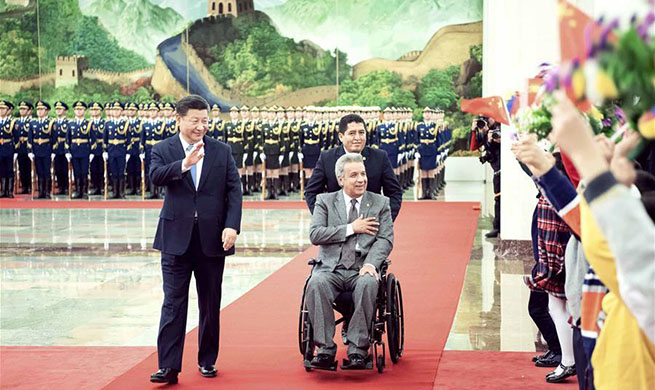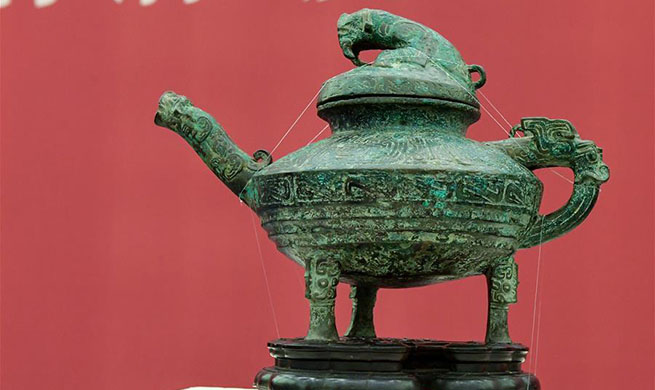LONDON, Dec. 12 (Xinhua) -- British Prime Minister Theresa May will face a vote of no confidence Wednesday from Members of Parliament (MPs) in her own Conservative Party that could see her kicked out of her role as prime minister and the Party leader.
If that were to happen, May would still remain as prime minister until her successor had been chosen.
That could see May remaining in Downing Street into January, with important government business effectively put on hold, and most significantly no progress being made on any Brexit deal.
The vote of no confidence in May will be carried out by the so-called 1922 Committee, the representative group for Conservative MPs.
The vote was triggered early on Wednesday morning when the necessary quota of 48 letters from MPs asking for a leadership vote was reached, which represents 15 percent of Tory MPs.
If May can win the support of 158 Tory MPs, 50 percent of MPs plus one, then she can stay as leader and as prime minister.
"May only has to win a simple majority in this no confidence vote in order to stay as leader," constitutional expert Tim Bale, professor of politics at Queen Mary University London (QMUL), told Xinhua.
The rules of the leadership process state that the leader can face just one confidence vote in a year, so if May wins on Wednesday evening she will be immune from challenges until next December.
However, if the vote is a close one May could feel that she is too politically damaged to continue, and she would step down as leader and prime minister.
"You can win a confidence vote by one vote and stay in place, but I would suggest that that kind of majority would not be sufficient," Bale said.
"It might be a technical win, but it would mean the Conservative Party leader is fatally wounded," he added.
If May is defeated, or if she steps down as a result of the vote, then the Conservative Party will immediately begin the process of choosing a leader, who will become the new prime minister.
The head of the 1922 Committee Graham Brady will agree a date for the first round of the leadership election with the prime minister.
Then, candidates for leader will come forward from among Conservative MPs. Each candidate needs just two other MPs to nominate them for the election.
This could see an initially large field of candidates running for leadership, and a series of votes will be held among Conservative MPs.
In each round of the vote, the lowest polling leadership candidate will fall out of the race until there are just two left. Both those candidates will then be put to a postal ballot by the entire membership of the Conservative Party across the whole of Great Britain.
Figures from March this year show that this electorate is about 124,000 strong.
May went through the initial parts of this process in the summer of 2016 when she was eventually chosen to replace outgoing David Cameron, who quit the morning after the June referendum set Britain on a path to leave the European Union (EU).
At that time, the initial rounds of voting among Conservative MPs to reduce the field to two candidates took 10 days, and a postal ballot of party members was not necessary as the other candidate in the election with May withdrew from the race.
The first part of the process, the voting rounds for MPs, could take the process up until just before Christmas.
With the disruption of holidays and to the postal system, it would not be possible to hold a ballot of the full party membership until the New Year.













